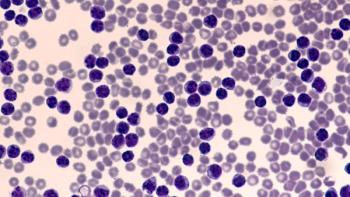
Immunoglobulin-Derived Dry Eye Treatment Leads to Positive Response in Patients
Study is the first to identify the presence of anti-citrullinated protein autoantibodies in human tear fluid as well as discover the new eye drop treatment.
Researchers at the University of Illinois at Chicago (UIC) have found that patients with dry eye disease experience reduced signs and symptoms of the condition in response to a new eye drop treatment that targets anti-citrullinated protein autoantibodies (ACPAs) in human tear fluid.
Published in the journal The Ocular Surface, the study authors are also the first to identify the presence of ACPAs in human tear fluid. In a previous study, these researchers discovered that strains of DNA extrude from neutrophils, a type of white blood cell, to form webs on the surface of eyes affected by severe dry eye disease, causing inflammation.
The new eye drops, which are formulated using pooled antibodies, treat dry eye disease by knocking the immune system out of a cycle of inflammation, at least partially, according to the study. The pooled antibodies are made from immune globulins processed from the donated blood of thousands of individuals, all containing varied types of antibodies that counteract the adverse events of ACPAs.
There are currently 2 approved drugs to treat dry eye, according to Sandeep Jain, MD, senior author of the study and UIC professor of ophthalmology and visual sciences at the College of Medicine.
“[T]hey don’t work for everyone, especially those with severe disease, so having a new drug that can treat the disease by targeting a different mechanism, in this case, an autoimmunity, is very important,” Jain said.
The study included 27 participants with severe dry eye disease, who were randomized into 2 groups. One group was given eye drops made from pooled antibodies and instructed to administer 1 drop to each eye twice daily for 8 weeks. The control group was given the same instructions with eye drops made without antibodies.
The researchers found that participants using antibody-based eye drops had a statistically significant and clinically meaningful reduction in corneal damage at 8 weeks compared with the control group. Questionnaire scores related to symptoms also reflected significant improvement among patients using the new antibody-based eye drops compared with the eye drops without antibodies. In the test group, the amount of pro-inflammatory biomarkers, or dry areas, was also reduced on the surface of the eye.
“Participants in the trial who used the drops with pooled antibodies reported less eye discomfort and their corneas were healthier,” Jain said. “The data from this early clinical trial suggests that eye drops containing pooled antibodies may be safe and effective for treating dry eye disease, and we look forward to conducting larger randomized trials to definitively prove its efficacy.”
Reference
- Antibody-based eye drops show promise for treating dry eye disease [press release]. Published October 11, 2019. https://today.uic.edu/antibody-based-eye-drops-show-promise-for-treating-dry-eye-disease. Accessed November 8, 2019.
Newsletter
Stay informed on drug updates, treatment guidelines, and pharmacy practice trends—subscribe to Pharmacy Times for weekly clinical insights.




















































































































































































































